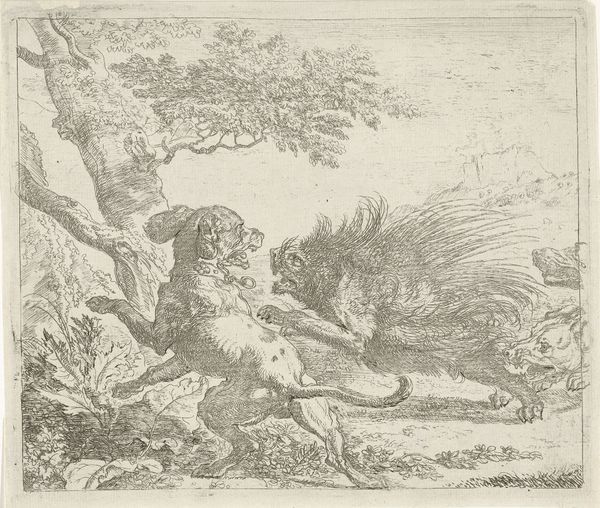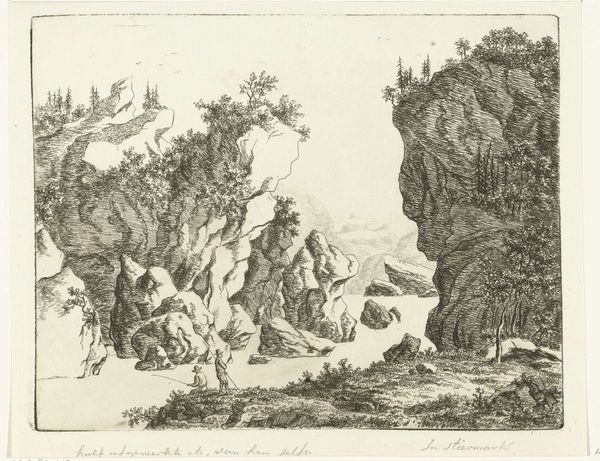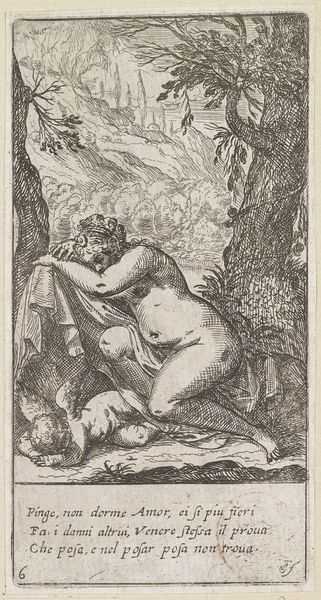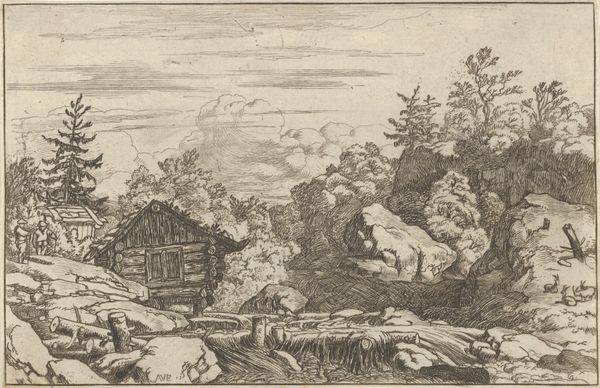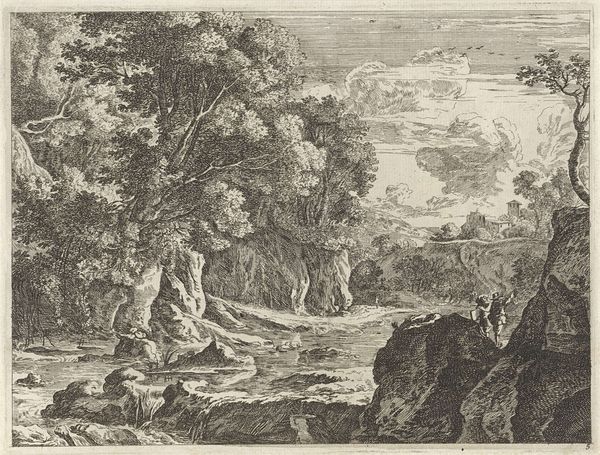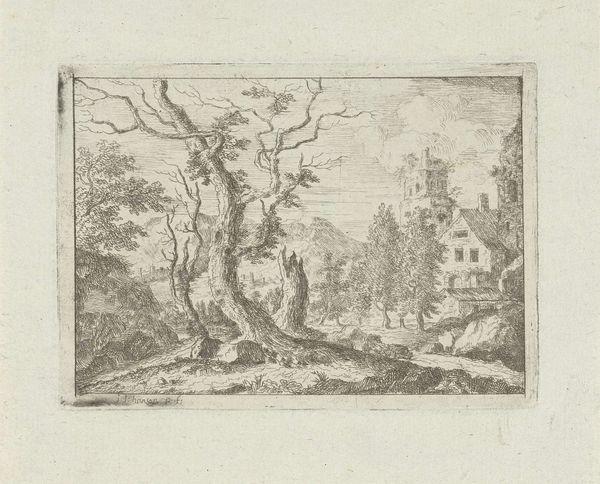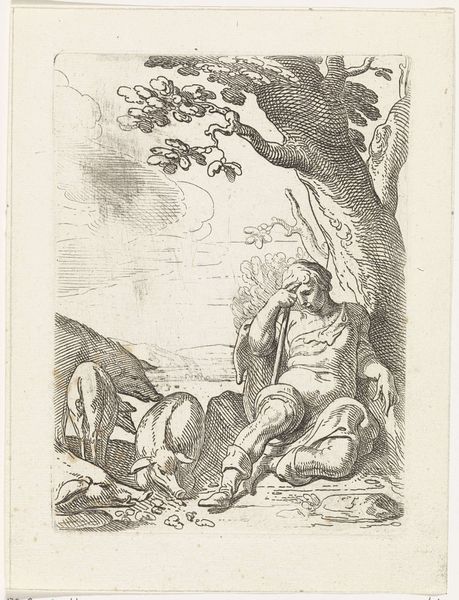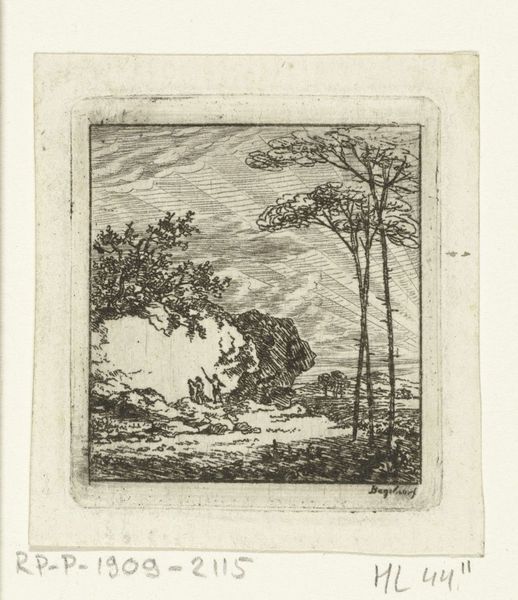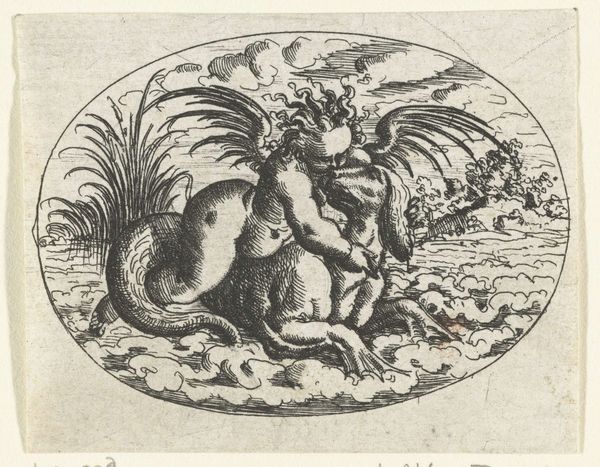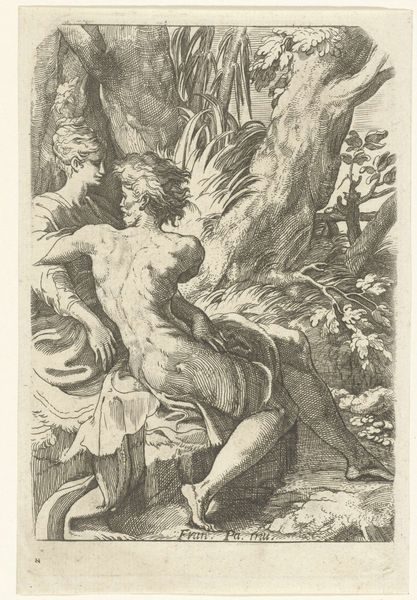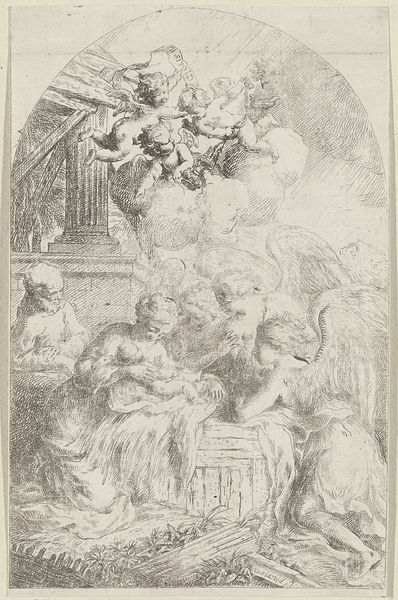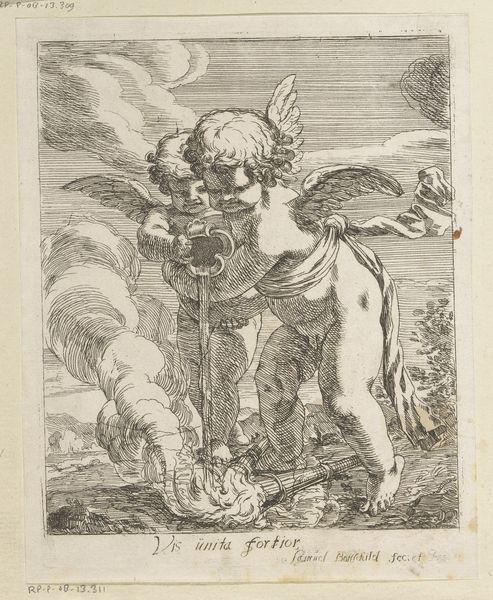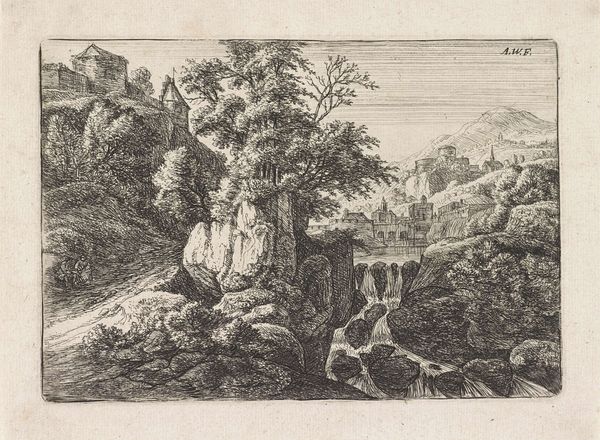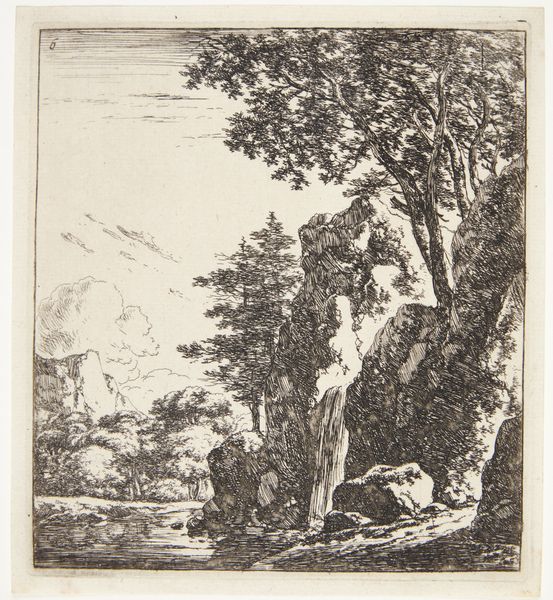
etching
#
narrative-art
#
baroque
#
etching
#
landscape
#
etching
#
figuration
#
nude
Dimensions: height 75 mm, width 78 mm
Copyright: Rijks Museum: Open Domain
Romeyn de Hooghe etched this illustration for Boccaccio’s Decameron in the late 17th or early 18th century. At its heart lies the figure of a woman kneeling by a lion, against a seascape with a goat perched atop a cliff. The goat, an ancient symbol, evokes Dionysian revelry and untamed nature. We see it echoed in Renaissance bacchanals and even further back in classical depictions of satyrs. Note how, over time, the Dionysian goat, once revered, became demonized with the rise of Christianity, reflecting our culture's shifting relationship with primal instincts. The woman and lion recall the classical myth of Cybele, the great mother goddess. This motif resurfaces throughout history, signifying both maternal power and the control of wild, instinctual forces. Here, the artist taps into a collective memory, stirring deep-seated emotions about nature, power, and our place in the cosmos. The cyclical journey of symbols continues, as the goat and the lioness have resurfaced throughout art history, constantly adapting and reflecting humanity's ever-changing psyche.
Comments
No comments
Be the first to comment and join the conversation on the ultimate creative platform.
